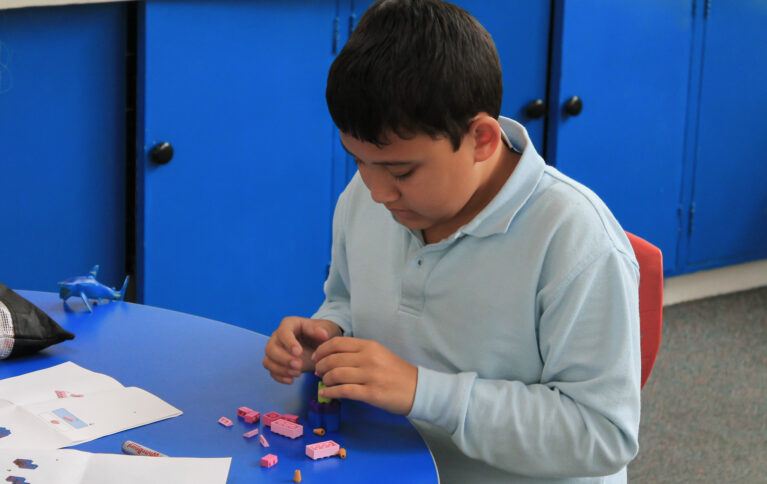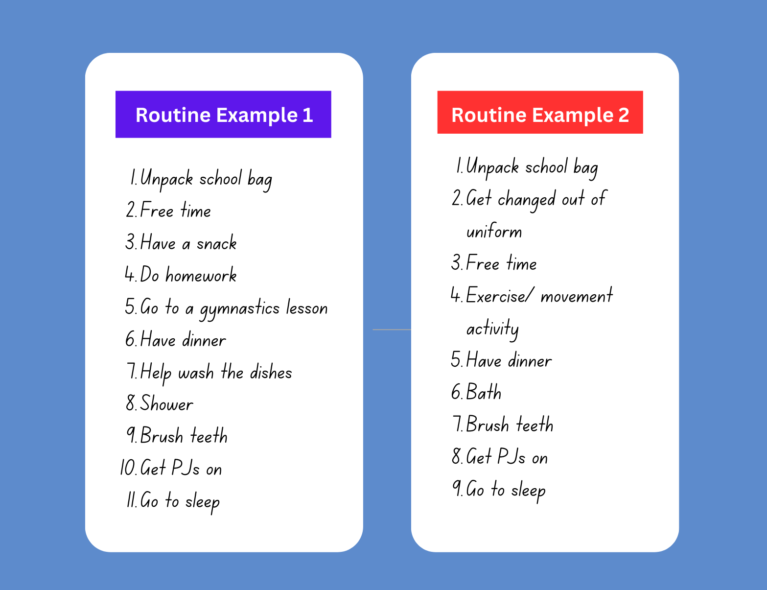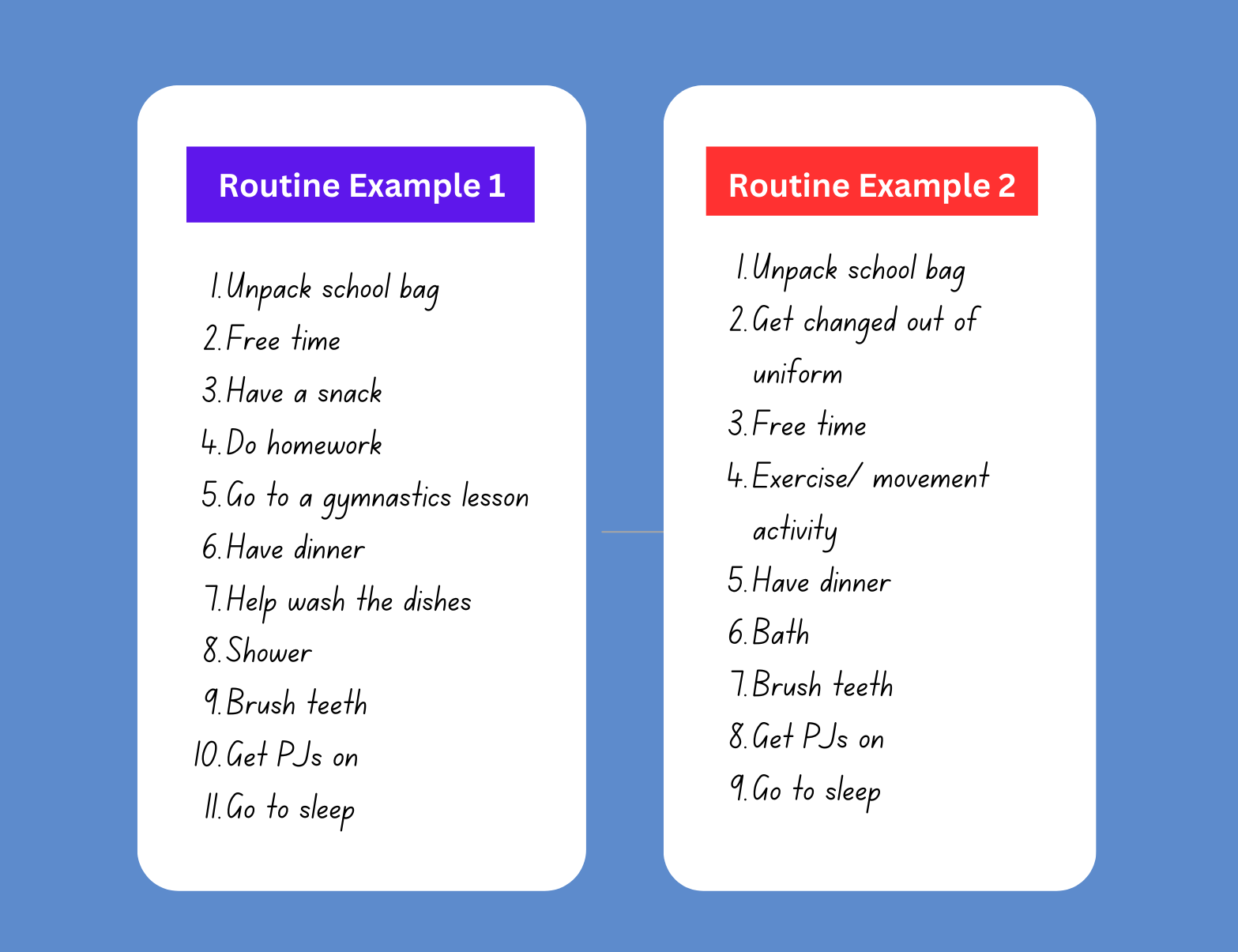How to encourage independent after-school routines

Whether it be helping with the household chores, learning to occupy their own time, or supporting your child to engage in an after-school activity, the afternoon routine can feel overwhelming for both the parent/carer and the young person.
This article provides strategies to help you support your child to develop greater independence in the afternoons, and it might even allow you a break for a nice cup of tea! Not all of the following steps may be relevant for your child, but they hopefully will provide a good starting point.
1. Develop a routine
Developing a consistent routine will help your child understand expectations and provide the repeated opportunity to complete tasks with a greater rate of success. It’s a great idea to develop a consistent daily routine involving activities such as daily living skills, homework, household chores and leisure activities. It helps to build in activities your child enjoys as well as the tasks your child needs to get done each day. Below are some examples of after-school routines.

Consider starting with a few steps to build success and then adding on more tasks/activities as the child’s independence increases.
2. Visual supports
Visual aids such as a written or pictorial daily or weekly timetable, or an app on the iPad (for example, “Choiceworks”) can support your child in understanding the expectations and providing predictability. These can be marked off as completed and provide a reference point, if needed, to see what’s coming next.
A smartwatch is another great tool for setting reminders and encouraging independence. It allows reminders to come from the device, rather than from you, which helps your child build independence with staying on track over time.
3. Provide choices
There are, of course, tasks and activities within the day that are unavoidable, such as brushing teeth, showering, and unpacking the school bag. However, ensuring there are daily opportunities where the young person can have free choice increases their sense of independence and autonomy.
Using example 1 above ‘free time’ is a perfect opportunity where the young person can choose what they want to do. You could also provide choices of the order that the routine is done, for example, “do you want to have free time now or later?” Providing these types of choices can allow space for problem-solving with the young person while still maintaining that these important tasks need to be completed.
4. Incorporate play and downtime
Whether structured or unstructured, incorporating the play activities that your child enjoys (e.g. games or crafts) builds preferred activities into the daily routines. Additionally, including some free time or “downtime” where there is no expectation can provide a break from the more structured aspects of their routine.
5. Positive reinforcement
As your child is completing activities in the routine, it can be valuable to provide some positive reinforcement. Whether it be verbal praise or a token system, it can be important for some young people to give them some extra motivation to complete the routines. Our biggest tip in this area is to make sure the positive reinforcement is meaningful to them (e.g., do they enjoy praise, or would they prefer chatting about their special interest?). Over time, you can increase the number of steps required before accessing reinforcement and even work towards fading the reinforcement altogether if the young person is motivated enough to complete the routine themselves.
6. Provide support, then decrease gradually
When you first start building an after-school routine, you may initially need to be there to support every step of the way. Over time, you’ll be able to gradually decrease support as the young person becomes more independent and confident in their routine. Examples of types of support are:
- Modelling – providing an exact model of what needs to be done
Gesturing – providing a point or hand gesture towards the step/task/activity
Getting started – help the young person get the task started, then fade back as they are doing it by themselves.
7. Address the challenges or barriers
If the young person has trouble completing the routine, it’s important to look for and identify the underlying cause and re-assess the routine. Things to think about might be:
- Is the routine too long?
Are there enough breaks?
Does the young person have the skills to complete the steps/task/activity?
8. Celebrate the wins!
Lastly, encouraging independence can take time and varies for everyone. Celebrate small wins along the way and involve your child as much as possible when creating goals or next steps.
About the author
Written by Ashleigh Farrugia, Behaviour Consultant at Autism Partnership. Ashleigh has worked in the field for over 15 years, working in schools, homes, and the community supporting kids and young adults. She is passionate about educating and making a change in the wider world about how we can all be more neurodiversity-affirming.
Subscribe to our newsletter
For information about our FREE parent talks, handy resources and all our latest news.





